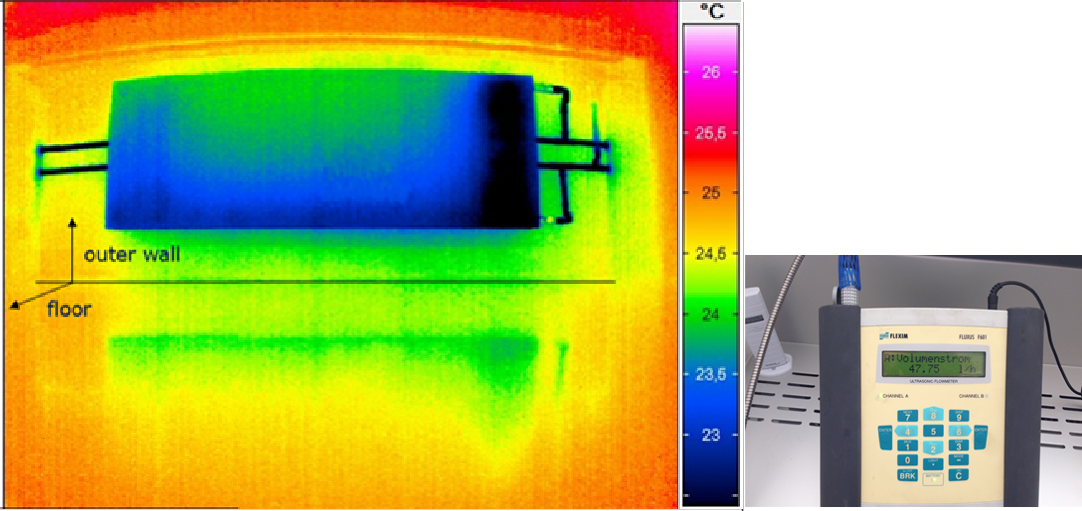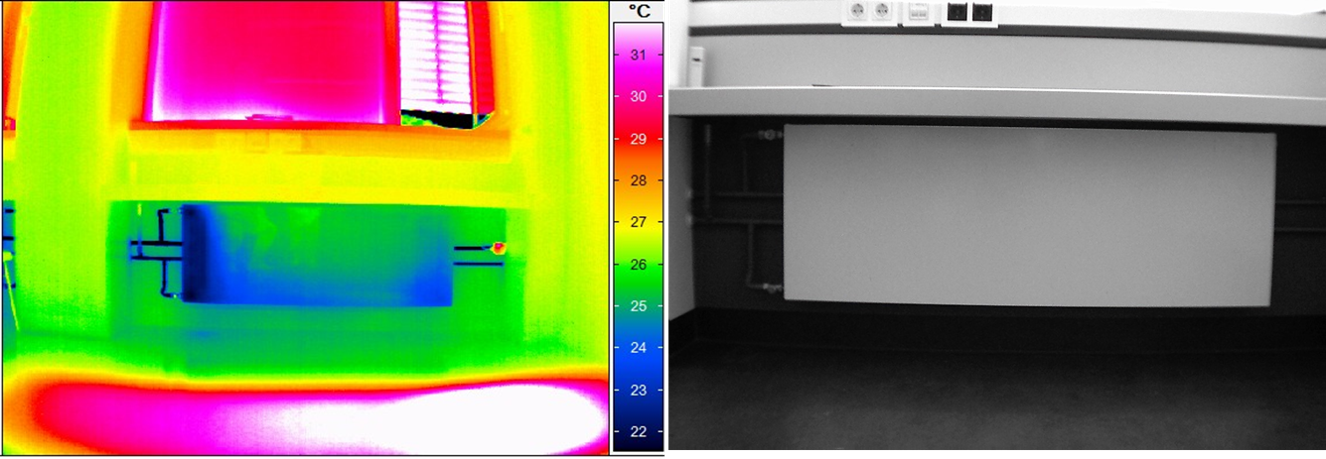Surface temperature of the radiator in cooling mode
The feed line for radiators is located at the top in heating mode. The inflowing warmer feed water is an attempt to rise against the existing pressure gradient between feed and return flow. This achieves a uniform temperature distribution in the radiator. If the cooling water enters at the top in cooling mode it would fall down with the pressure gradient. A short-circuit current is generated. This current can only be avoided by a sufficiently high volume flow. Another possibility is to reverse the direction of flow of a radiator. Initial measurements have shown that radiators in which the plates are flowed through one after the other (serial flow) are evenly cooled without flow reversal, even with small volume flows.

Thermographic image of a parallel flow radiator with upper cold water inlet. The radiator is supplied with only half of the design volume flow. The insufficient volume flow leads to a short-circuit currernt. As a result, only a small part of the surface of the radiator becomes thermally effective. A significant increase in the volume flow or a reversal of the direction of flow of the radiator is required.

The thermographic image shows a short-circuit flow in a parallel radiator. On the right you can see the radiator in the room. The cold water inlet is at the top. The volume flow is too low. There is no cold air conveying, because only a small part of the surface of the radiator is thermally effective. The solar heat load on the floor can not be compensated.
This Video shows the temporal progression of the distribution of temperature in a parallelly flowed radiator with an upper cold water inlet. The cooling effect is minimal because of the short-circuit current. The flow must be reversed (cold water inlet at the bottom) or the volume flow must be increased to guarantee a opitmal flow through the radiator.
This Video shows the temporal progression of the distribution of temperature in a sequentially flowed radiator with an lower cold water inlet. The radiator is cooled over its entire surface, similar to a parallel flow radiator with a lower cold water inlet.
This Video shows the temporal progression of the distribution of temperature in a sequentially flowed radiator with an upper cold water inlet. The radiator is cooled over its entire surface, too. The time delay is not relevant, because in summer a continuous cooling mode takes place. A reversal of the flow direction can be dispensed, but this statement must be further investigated.
back